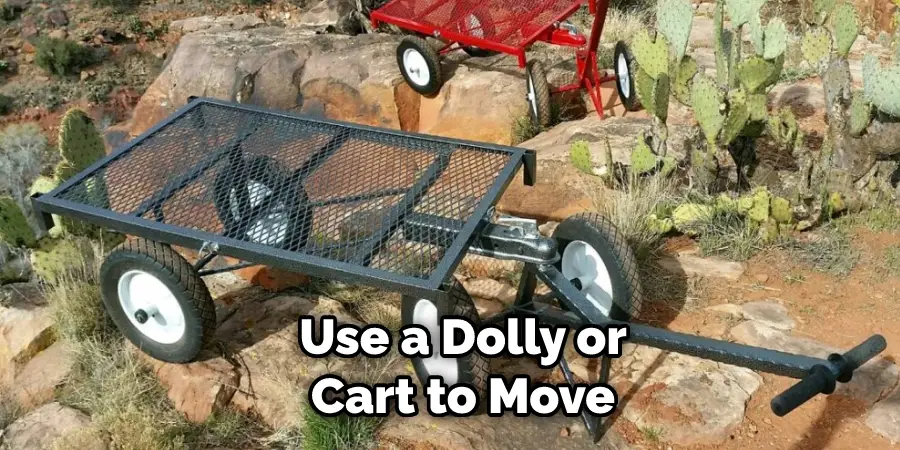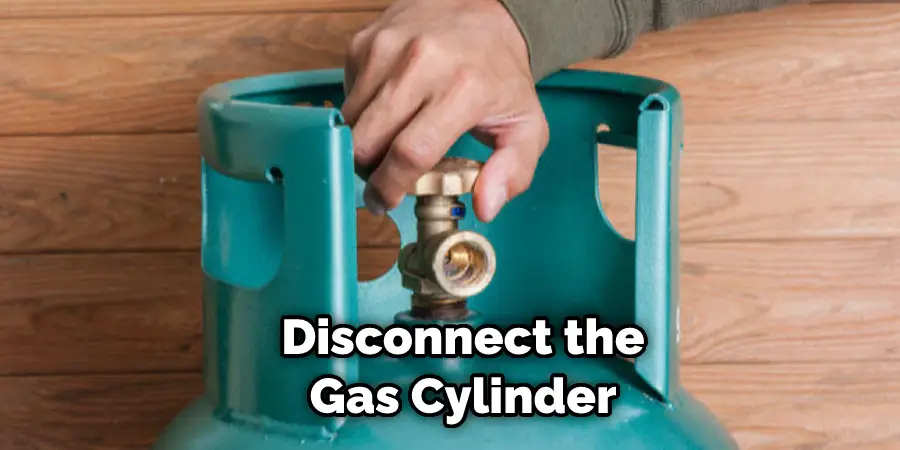Are you looking for a convenient way to transport your patio heater? Moving an outdoor furniture item like a heater can be tricky, especially if it’s awkward and heavy. With the right equipment and planning, though, it’s possible to move your outdoor heater safely while avoiding any damage or other issues.

In this blog post, we’ll walk you through what to consider before moving your patio heater, including materials needed, potential obstacles that could arise during transportation, and several tried-and-true methods of safe transport. So read on for tips on how to transport patio heater with ease!
Is It Difficult to Transport Patio Heater?
It all depends on the size, build, and weight of your patio heater. If your particular heater is particularly bulky or heavy, it may be more difficult to move than a smaller model. Some larger heaters can weigh up to 90 pounds or more, so you’ll likely need help from another person for this type of move. In addition, you’ll need to consider a few other factors, such as the terrain of where you’re moving your heater and if it will fit in your vehicle.
Materials Needed for How to Transport Patio Heater
Before commencing with transportation, make sure that you have all the necessary materials on hand. Here is a list of what you’ll need to transport your patio heater:
- Moving dolly or cart
- Blankets or towels
- Tie-down straps
- Furniture pads
- Protective covering (e.g., furniture wrap, plastic sheeting, tarps)
10 Steps on How to Transport Patio Heater
Step 1: Prepare the Heater
First, you need to prepare the heater for transportation by disconnecting the gas cylinder and electric cord, if applicable. Remember to secure the caps for both items.
Step 2: Secure the Heater

If your heater is heavy, use a dolly or cart to move it. If you don’t have one of these, try using blankets or towels underneath and tie-down straps on top of the heater to secure it in place during transportation. Using blankets will make it easier to move the heater while also protecting it from any bumps or scratches along the way.
Step 3: Wrap with Protective Covering
Once you have the heater secured, wrap it in a protective covering such as furniture wrap, plastic sheeting, or tarps. This will give added protection against any weather elements or debris that could damage the heater while in transit.
Step 4: Secure It With Tie Down Straps
Once your patio heater is completely covered, use tie-down straps to secure it tightly and ensure that it won’t move during transportation. The straps will help to prevent the heater from shifting, sliding, or tipping during transit.
Step 5: Load It in Your Vehicle
Now it’s time to load your patio heater into your vehicle. Make sure you have enough room before doing this, as some larger models may require extra space. You can also use furniture pads to help protect both the item and the inside of your vehicle from any bumps or scratches.
Step 6: Secure It in Place
Once you have the heater loaded into your vehicle, use tie-down straps again to secure it in place. Make sure the straps are tight enough so that the heater won’t move during transportation.

Step 7: Check for Clearance
Before driving, make sure that the heater is secure and doesn’t have any issues with clearance. This means checking for any obstructions or overhangs that could affect its movement.
Step 8: Drive Carefully
When transporting your patio heater, always drive carefully and observe the speed limit at all times. This is important to ensure that the heater doesn’t move or become damaged during transit.
Step 9: Unload and Install
When you get to your destination, be sure to give yourself enough time and space to unload the patio heater safely. You may need help from another person for this, depending on its size and weight.
Step 10: Connect It Up
Once the heater is unloaded and installed, reconnect the gas cylinder and electric cord if applicable. Make sure all connections are secure before turning on the power or lighting up the heater. It is a necessary safety precaution to make sure everything is in check.
Transporting your patio heater doesn’t have to be a difficult task. With the right materials and steps, you can move your heater quickly and safely.

10 Safety Precautions to Follow
- Make sure the patio heater is completely cool before attempting to transport it. Wait at least an hour after use or disconnecting from the gas source before moving it.
- Secure the patio heater in a vehicle that can accommodate its size and weight, such as a truck, trailer, or van. Place it on packing material so that it won’t scratch the vehicle’s surface.
- Use ratchet straps or rope to keep the patio heater secure when transporting in an open-air trailer, truck bed, or van. Use coverings to protect the unit from dirt, dust, and moisture.
- Never transport a patio heater on its side. This could cause damage to the internal components or create an unsafe condition. Internal damage could lead to gas leaks.
- Ensure the gas cylinder is properly secured and will not jostle around during transport. The cylinder can shift, so it needs to be held securely in place. The safest way to transport a full cylinder is in an upright position in the back of a truck with the tailgate closed over it.
- If you are using a trailer, use safety chains to secure the patio heater and gas cylinder in place. Make sure the chains do not come into contact with any combustible material.
- If you must transport an empty gas cylinder, make sure it is properly vented or purged of any remaining gas before placing it in your vehicle.
- If you are using a van, use bungee cords or ratchet straps to secure the heater in place while driving. Cords or straps will help keep the patio heater from shifting, jostling, or falling over.
- Always wear protective gear when loading or unloading a patio heater and gas cylinder. This includes gloves, face masks, and safety glasses to protect you from any potential hazards. These precautions will help ensure your safety during transport.
Following these safety precautions will help you transport your patio heater safely and securely. By taking the time to properly secure your patio heater, you can minimize the risk of damage or injury during transport.
Frequently Asked Questions
What Will Be the Costing of Transporting Patio Heater?
When transporting a patio heater, there are several costs to consider. The cost of hiring professional movers or renting a truck may need to be taken into account. If you are doing the move yourself, you will need to factor in the cost of any moving and packing materials, such as ratchet straps, ropes, and coverings.
Gas cylinders must also be properly secured and can require additional materials, such as a propane tank holder. Additionally, you will want to factor in the cost of fuel for your vehicle if applicable. The total cost of moving a patio heater will vary depending on how far it needs to travel and what type of vehicle is used. Keep in mind that transporting a patio heater can be an expensive undertaking, so it’s best to plan ahead and budget accordingly.
How to Take Care of the Patio?
Taking proper care of your patio heater is key to ensuring it remains safe and functional. When not in use, it should be stored inside a covered storage area away from rain and snow that can cause corrosion or rust. It’s important to regularly check the gas cylinder for leaks or damage, as well as clean the burner heads and replace any worn or broken parts.

Additionally, make sure to keep the area around your patio heater free of clutter and combustible materials. It will definitely help to extend the life of your patio heater. Follow the manufacturer’s instructions for any additional maintenance and safety considerations when using your patio heater. Taking the time to properly care for it will help ensure safe and enjoyable outdoor gatherings for years to come.
Conclusion
With a few tips and precautions in mind, it is possible to transport your patio heater efficiently and safely. Make sure all the components of the heater are properly assembled and heatproof before beginning, measure the size of your heater for any transportation plans you have, and purchase items like furniture straps to prevent any damage or accidents.
Keep in mind some cities may have local laws that prohibit the use of patio heaters or require registration. Ensure that this is looked into prior to transporting your patio heater.
Following these steps on how to transport patio heater simplifies the process of transporting a patio heater effectively! This blog will help you navigate through the different steps with ease and safety. Good luck!
You Can Check It Out to Patio Umbrella for Winter


